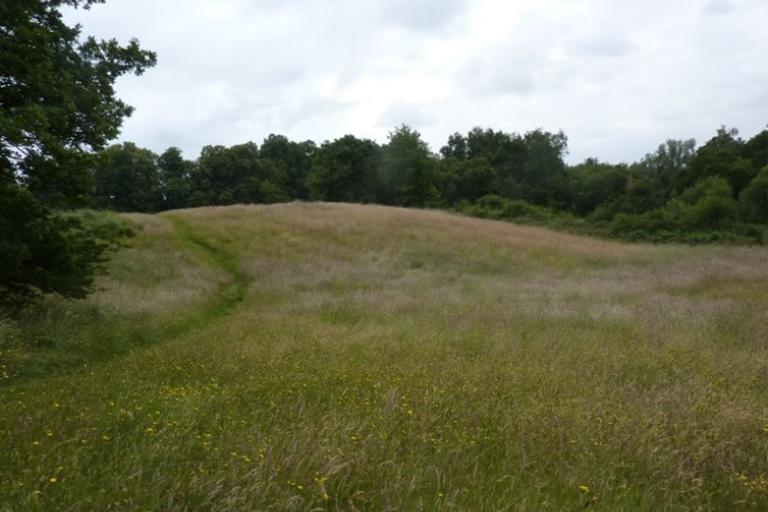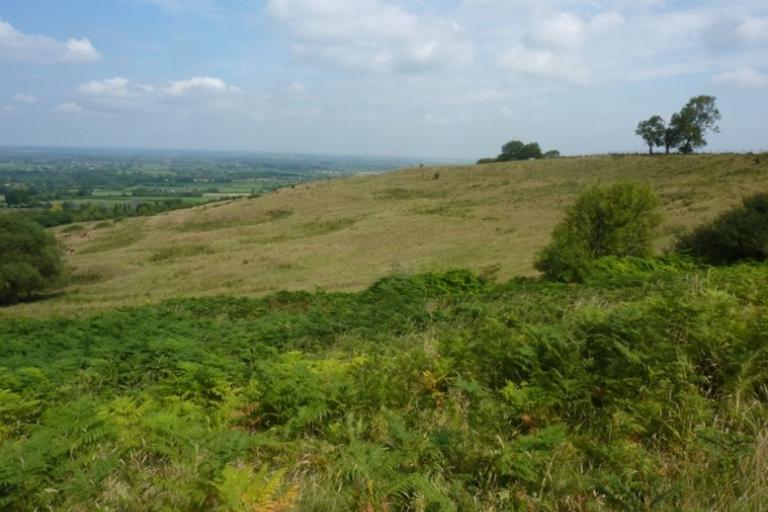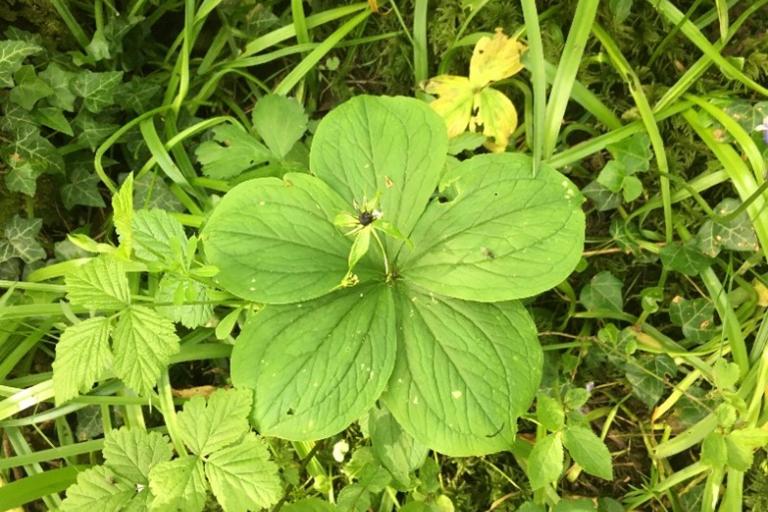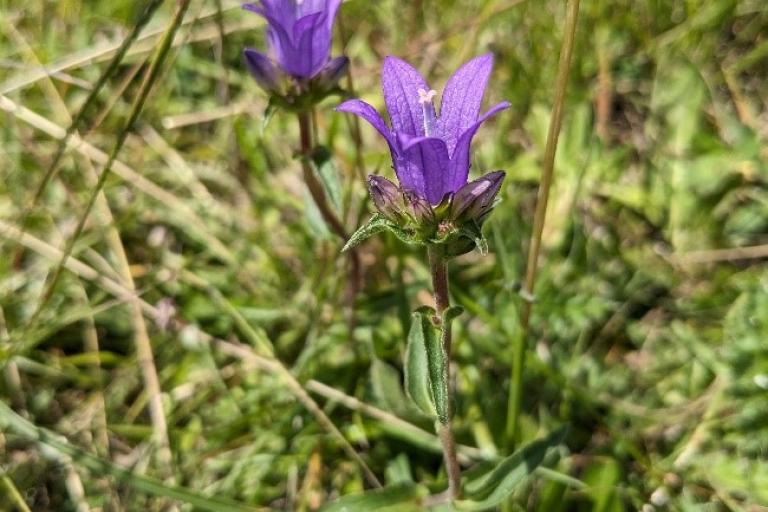This year, we conducted surveys of 38 existing and proposed Local Wildlife Sites (LWS) across Oxfordshire. The process of adding this year’s species records to our database is ongoing. Here are some of the highlights from our surveys:
Matthew Arnold Field
Located southwest of Oxford, Matthew Arnold Field is an Oxford Preservation Trust reserve currently being assessed as a potential LWS. This site boasts a diverse range of habitats, including grassland, woodland, and wetland. Restoration efforts in the wetland areas have led to the recording of species such as greater tussock-sedge, hemp-agrimony, meadowsweet, common marsh bedstraw, square-stalked St John’s-wort, greater bird’s-foot-trefoil, skullcap, and brooklime. The grassland is locally species-rich, featuring common knapweek, lady’s bedstraw, common cat’s-ear, field scabious, yellow rattle, and common bird’s-foot-trefoil. Notable, a small amount of wood sage, an uncommon species in Oxfordshire, was recorded in the woodland, along with a sighting of a purple hairstreak butterfly.

Acid grassland in Cherwell
The geology in Oxfordshire is largely neutral to calcareous so it was interesting to visit a proposed LWS grassland on more acidic soils. It is towards the southern end of Cherwell district and has steep banks including areas of lowland dry acid grassland with tormentil, harebell, pignut, lady’s bedstraw, mouse-ear hawkweed, lesser stitchwort, common bird’s-foot-trefoil, common cat’s-ear and sheep sorrel. Additionally, springs and rush-dominated flushes support wetland plants like meadowsweet, marsh bedstraw, floating sweet-grass, square-stalked St. John’s-wort, greater bird’s-foot-trefoil, and bog stichwort.

Wet woodland at West Oxfordshire/Cherwell boundary
In May, we surveyed a wet woodland at the boundary of West Oxfordshire and Cherwell districts. The site hosts a healthy population of Herb Paris, with 50 plants counted this year. The woodland also supports a variety of other woodland and wetland plants, including bluebell, goldilocks buttercup, sanicle, wood meadowgrass, brooklime, marsh marigold, meadowsweet, wild angelica, water mint, and hemp-agrimony.

Chalk Grassland in South Oxfordshire
This summer, we explored a chalk grassland site in South Oxfordshire, situated on the south-facing side of a valley in the Chilterns plateau. While some level areas have been improved and are less species-rich, the steep central part of the site remains diverse, featuring many species characteristic of unimproved chalk grassland. Dominant grasses include upright brome, quaking-grass, downy oat-grass, and glaucous sedge. The herb-rich sward includes mouse-ear hawkweed, dwarf thistle, common restharrow, wild thyme, hoary plantain, clustered bellflower, salad burnet, yellow-wort, small scabious, common milkwort, hairy violet, and kidney vetch. In areas with short sward, annuals such as common centaury and fairy flax are common. Pyramidal orchids were frequently recorded , along with a bee orchid and the leaves of a few autumn gentian plants, a late-flowering species.
